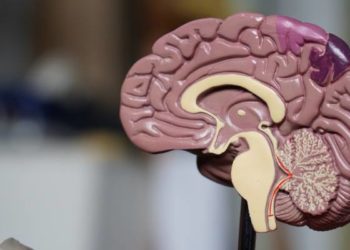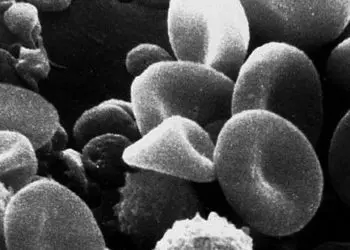2 Minute Medicine Rewind October 18, 2021
1. Topical diclofenac 70-81 mg/day was recommended as first-line pharmacological treatment for knee osteoarthritis.
2. Etoricoxib 60 mg/day and diclofenac 150 mg/day were the most effective oral NSAIDs for pain and function in OA patients but may not be appropriate in some individuals.
3. Benefits of opioid treatment, regardless of dose or preparation, did not outweigh harms in OA patients.
Evidence Rating Level: 1 (Excellent)
Osteoarthritis (OA) is a degenerative disease that most commonly affects hip and knee joints in older adults. In OA, the protective cartilage covering the ends of bones breaks down, allowing for bone-on-bone contact, causing significant pain, reducing physical function and quality of life, and increasing risk of all-cause mortality. From paracetamol (acetaminophen) to topical or oral non-steroidal anti-inflammatory drugs (NSAIDs) to opioids, clinicians have a myriad of options when prescribing pharmacotherapy for OA, making clinical decisions especially challenging. Research suggests that improvements in pain and physical function are similar for NSAIDs and opioids, yet opioids cause considerably more adverse events, such as immediate reactions (nausea, vomiting, drowsiness, etc.), chronic morbidities (increased risk of fractures, cardiovascular events), and substance dependence. Previous systematic reviews on the effectiveness of NSAIDs versus opioids for treating OA pain have clustered drug doses or drug classes in their analyses, limiting granular evidence. To present granular evidence, this systematic review and network meta-analysis of randomized trials assessed the effectiveness and safety of different doses and preparations of paracetamol, NSAIDs, and opioids for hip and knee OA pain and physical function. Inclusion criteria included trials published in English with ≥100 patients per group that evaluated paracetamol, NSAIDs, or opioids to treat OA. The primary outcome was pain. Secondary outcomes included physical function and safety. A total of 192 trials comprising 102,829 participants examined 90 different drug doses or preparations (3 for paracetamol, 68 for NSAIDs, and 19 for opioids). Topical diclofenac (70-81 and 140-160 mg/day) had ≥92.3% probability and five oral preparations (diclofenac 150 mg/day, etoricoxib 60 and 90 mg/day, and rofecoxib 25 and 50 mg/day) had ≥99% probability of more pronounced treatment effects than the minimal clinically relevant reduction in pain. All opioids had ≤53% probability of more pronounced treatment effects than the minimal clinically relevant reduction in pain. 0%, 29.8%, and 89.5% of topical NSAIDs, oral NSAIDs, and opioids, respectively, had an increased risk of any adverse event. The authors concluded that topical diclofenac 70-81 mg/day is effective and generally safer due to reduced systemic exposure and hence, should be considered as first-line pharmacological treatment for knee OA. Additionally, although etoricoxib 60 mg/day and diclofenac 150 mg/day were found to be the most effective oral NSAIDs for hip and knee pain and function in OA patients, their use in patients with comorbidities may not be appropriate. Benefits of opioid treatment, regardless of dose or preparation, did not outweigh harms in OA patients.
1. Use of therapeutic heparin in moderately ill patients with COVID-19 and increased D-dimer levels admitted to hospital wards was not associated with a significant difference in the primary composite outcome of death, invasive mechanical ventilation, non-invasive mechanical ventilation, or ICU admission within 28 days.
2. Patients treated with therapeutic heparin had a significantly lower rate of death at 28 days.
Evidence Rating Level: 1 (Excellent)
In patients admitted to hospital with COVID-19, the most common cause of clinical deterioration is hypoxemic respiratory failure. An underlying mechanism of coronavirus-related respiratory compromise may include a thrombo-inflammatory state, called COVID coagulopathy, causing pulmonary endothelial injury and microvascular thrombosis. Having increased D-dimer levels in the blood, as a marker of coagulopathy and resulting hypoxemia, is associated with poor prognosis. Heparin has anti-inflammatory and possible antiviral effects, potentially reducing the thrombo-inflammatory process and improving endothelial function. Previous randomized trials have found that therapeutic heparin may be beneficial in moderately, but not critically, ill patients with COVID-19, suggesting that medication initiation time may be important. The Therapeutic Anticoagulation versus Standard Care as a Rapid Response to the COVID-19 Pandemic (RAPID) trial evaluated the effects of therapeutic heparin compared with prophylactic heparin among moderately ill patients with COVID-19 admitted to hospital wards. The RAPID trial was conducted at 28 hospitals in six countries, namely Brazil, Canada, Ireland, Saudi Arabia, United Arab Emirates, and the United States. 465 adults with COVID-19 and increased D-dimer levels admitted to hospital wards were recruited between May 29, 2020 and April 12, 2021 and were randomly assigned to receive either therapeutic dose heparin (n = 228) or prophylactic dose heparin (n = 237) as part of their management plans. The primary outcome measure was a composite of death, invasive mechanical ventilation, non-invasive mechanical ventilation, or admission to an intensive care unit, assessed up to 28 days. Secondary outcomes included all-cause death, among others. 264 (56.8%) participants were men, the mean age was 60 years, and the mean body mass index was 30.3 kg/m2. At 28 days, the primary composite outcome had occurred in 37/228 patients (16.2%) assigned to therapeutic heparin and 52/237 (21.9%) assigned to prophylactic heparin (odds ratio 0.69, 95% confidence interval 0.43 to 1.10; P=0.12). Deaths occurred in four patients (1.8%) assigned to therapeutic heparin and 18 patients (7.6%) assigned to prophylactic heparin (0.22, 0.07 to 0.65; P=0.006). It was concluded that, in moderately ill patients with COVID-19 and increased D-dimer levels admitted to hospital wards, therapeutic heparin was not significantly associated with a reduction in the primary outcome, but the odds of death at 28 days was decreased. Consequently, the RAPID trial suggests that therapeutic heparin is beneficial in moderately ill patients with COVID-19 admitted to hospital wards.
1. Following head injury, older adults on warfarin had an increased risk of intracranial hemorrhage (ICH) compared with matched patients on a DOAC and patients not on anticoagulation.
2. There was no difference in ICH risk between patients on a DOAC and those not on anticoagulation.
Evidence Rating Level: 2 (Good)
Advanced age and anticoagulation are thought to be associated with an increased risk of intracranial hemorrhage (ICH) after a head injury. Consequently, in older adult patients on anticoagulation, head injury-associated ICH is a concern. Before 2010, warfarin, a vitamin K antagonist, was the most commonly used oral anticoagulant in North America. Since then, direct oral anticoagulants (DOACs) have become increasingly popular. Although previous research has suggested that patients on warfarin are at increased risk of ICH after a head injury, there is limited data on the risk of traumatic ICH among patients on a DOAC. Therefore, this retrospective cohort study evaluated the risk of ICH after an Ontario emergency department visit for head injury among patients 65 years and older taking warfarin or a DOAC compared with patients not taking anticoagulants. Patients were matched to create 3 cohorts based on anticoagulation status (warfarin v. DOAC, warfarin v. no anticoagulant, and DOAC v. no anticoagulant). For each cohort, the relative risk of ICH at the index emergency department visit, 30-day mortality, and the hazard of neurosurgical intervention among patients with ICH were calculated. The authors identified 77,834 patients with head injury, including 3,703 (4.8%) who were on warfarin, 9,214 (11.8%) who were on DOACs, and 64,917 (83.4%) who were not on anticoagulation. Of these, 5.9% of patients had ICH at the index emergency department visit. Patients on warfarin had an increased risk of ICH compared with matched patients on DOACs (relative risk [RR] 1.43, 95% confidence interval [CI] 1.20–1.69) and patients not on anticoagulation (RR 1.36, 95% CI 1.15–1.61). No difference in ICH was found between patients on DOACs compared with matched patients not on anticoagulation. In patients with ICH, 30-day mortality did not differ by anticoagulation status or type. Patients on warfarin had an increased hazard of neurosurgery compared with patients not on anticoagulation. It was concluded that older adults on warfarin who present with a head injury have an increased risk of ICH compared with matched patients on a DOAC and patients not on anticoagulation. Patients on a DOAC and those not on anticoagulation do not have a significantly different ICH risk. These findings may impact neuroimaging protocols after head trauma among patients on DOACs.
1. AUTO3, autologous transduced T cells expressing both anti-CD19 and anti-CD22 CARs, showed a favorable safety profile with no dose-limiting toxicities in pediatric and young adult patients with refractory or relapsed B-Cell acute lymphoblastic leukemia.
Evidence Rating Level: 1 (Excellent)
B-cell acute lymphoblastic leukemia (B-ALL) is a type of cancer that upregulates B-lymphocytes. Two B-cell specific markers, CD-19 and CD-22, are becoming promising targets of various immunotherapies, including chimeric antigen receptor (CAR) T cell therapy, a type of treatment that modifies patients’ own T cells to attack their cancer cells. However, reduced CD19 or CD22 antigen density at relapse is a major cause of treatment failure in patients treated with anti-CD19 or anti-CD22 CAR T cells as a standalone therapy, respectively. The authors reasoned that dual antigen targeting of CD19 and CD22 simultaneously may prevent relapse. However, the clinical efficacy and safety of CAR T cells targeting both CD19 and CD22 remain unclear. This phase 1 trial tested AUTO3, autologous transduced T cells expressing both anti-CD19 and anti-CD22 CARs, in pediatric and young adult patients with refractory or relapsed B-ALL. The primary endpoints were the incidence of grade 3-5 toxicity in the dose-limiting toxicity period and the frequency of dose-limiting toxicities. Secondary endpoints included overall and event-free, among several others. A total of 15 patients (aged 1-24 years) received infusion of AUTO3 and were followed up to a data cut-off of June 1, 2020. AUTO3 showed a favorable safety profile, with no dose-limiting toxicities reported. The 1 year overall and event-free survival rates were 60% and 32%, respectively. It was suggested that relapses were due to limited long-term AUTO3 persistence. These findings indicate that improving CAR T cell persistence may increase efficacy of dual targeting CAR T cell therapy in B-ALL.
1. Impaired left anterior descending (LAD) artery coronary flow velocity reserve (CFVR) acquired by transthoracic Doppler echocardiography (TDE) (≤2) was a strong, independent predictor of adverse cardiac outcome in patients with HCM.
Evidence Rating Level: 2 (Good)
Hypertrophic cardiomyopathy (HCM), a disease that causes thickening of heart muscle, is the most common inherited cardiac disease. To date, there are few clinical and echocardiographic parameters for predicting certain HCM-related cardiovascular events, such as progressive deterioration of left ventricular (LV) systolic function with heart failure development or an ischemic stroke. Previous studies have found that microvascular ischemia may be one such parameter. However, assessment of microvascular ischemia in HCM patients remains challenging. Coronary flow velocity reserve (CFVR) acquired by transthoracic Doppler echocardiography (TDE) has proved to be a non-invasive and inexpensive tool for functional evaluation of microcirculation in the absence of epicardial stenosis. The long-term predictive value of TDE CFVR on clinical outcome has not been investigated in HCM patients. Consequently, this prospective study assessed long-term prognostic value of CFVR on clinical outcome in patients with HCM. A total of 150 patients with HCM (68 men, 82 women; mean age 48±15 years) were recruited between January 2008 and July 2017. Of these, 41 patients had significant left ventricular outflow tract gradient (LVOTG) and 109 patients had no obstruction. Clinical characteristics and echocardiographic and CFVR findings for both left anterior descending (LAD) and posterior descending (PD) arteries were assessed in all participants. Patients were stratified into 2 subgroups depending on CFVR LAD value: Group 1 (CFVR LAD>2, [N=87]) and Group 2 (CFVR LAD≤2, [N=63]). The primary outcome was a composite of HCM-related death, heart failure requiring hospitalization, sustained ventricular tachycardia, and ischemic stroke. During a median follow-up of 88 months, 8/87 (9.2%) patients in Group 1 and 33/63 (52.4%) patients in Group 2 (P<0.001 vs. Group 1) had adverse cardiac events. Patients with preserved CFVR LAD had significantly higher cumulative event‐free survival rate compared to patients with impaired CFVR LAD (96.4% and 90.9% versus 66.9% and 40.0%, at 5 and 8 years, respectively: log‐rank 37.2, P<0.001). CFVR PD was not significantly associated with outcome. The authors concluded that impaired CFVR LAD (≤2) is a strong, independent predictor of adverse cardiac outcome in patients with HCM. Identifying patients with impaired CFVR LAD may help improve risk stratification of HCM patients.
Image: PD
©2021 2 Minute Medicine, Inc. All rights reserved. No works may be reproduced without expressed written consent from 2 Minute Medicine, Inc. Inquire about licensing here. No article should be construed as medical advice and is not intended as such by the authors or by 2 Minute Medicine, Inc.







